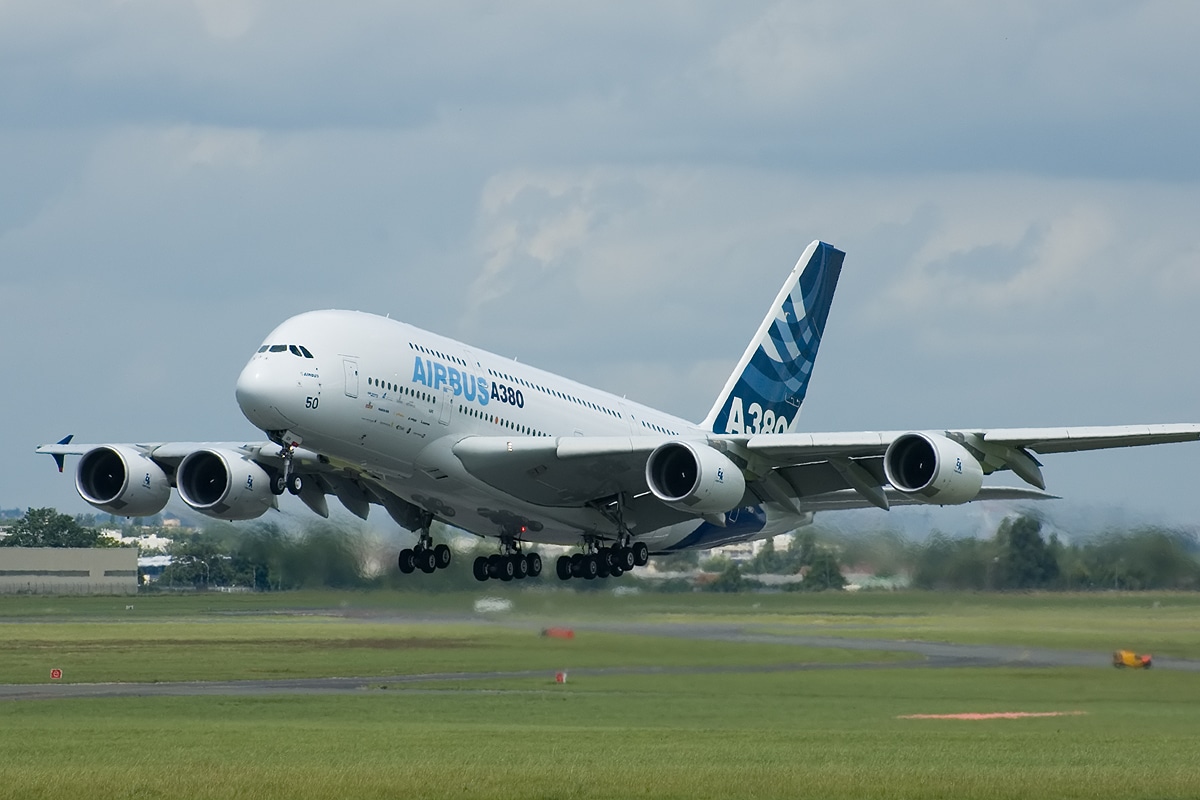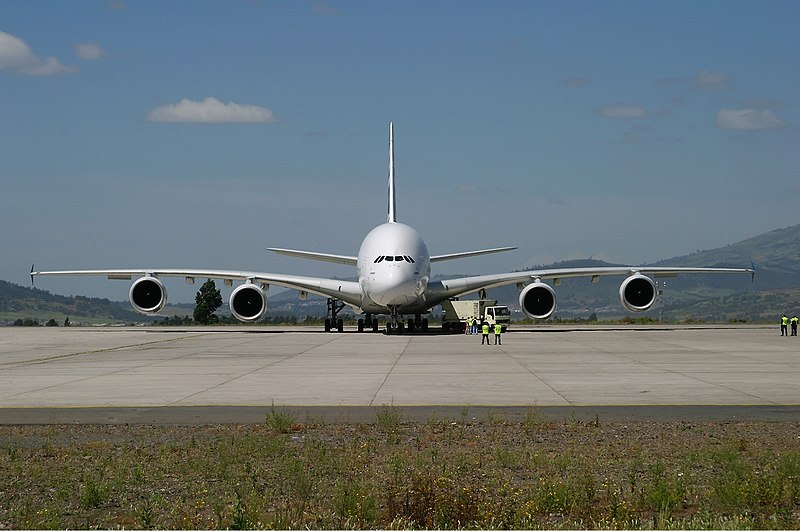Aerospace
Why A380 aircraft have become so important to many airlines today
Since passenger demand is booming but airlines are unable to meet it owing to fleet shortages, Airbus A380 planes have gained more significance for some carriers.

One of the largest aircraft in the world is the Airbus A380. It is increasingly important resources for the airlines as the demand from passengers grows globally.
Since two years ago, the entire planet has been under extreme lockdown. People have started travelling more frequently now that COVID is progressively declining, according to research. and the majority of travelers have to transit through the airport. However, even the airport is now unable to manage the number of passengers that a single plane can carry, which is between 180 and 350 seats. This makes it impossible to clear passengers at the airport.
Heathrow Airport recently passed 6 million people in just 4 months; the airport claims it can accommodate 100,000 passengers per day; as a result, numerous flights were cancelled, along with over 10,300 flights operated by British Airways. However, it is highly challenging for airlines to manage these cancelled flights because the majority of passengers become irate and may submit complaints against airlines. In order to minimize the impact on passengers, Heathrow is requesting their airline partners to cease selling summer tickets as just roughly 1,500 of the 4,000 daily seats have currently been sold to travelers on average.
Since Emirates Airlines has more Airbus A380s that can hold more than 500 passengers and is prepared to run LHR airport to carry passengers, this airline has suddenly taken on a significant role in the discussion. According to Emirates Airlines, they rehired and trained 1,000 A380 pilots in the previous year in order to be ready to meet consumer and travel demand.
Despite the handling capability of the Emirates airlines, Heathrow is still unable to accommodate such high numbers of passengers right now. Given the progress, the airline definitely needed wide-body aircraft like the 747 or the A380.
How the A380 can meet the demand at this time ?
As the airport is larger, each landing and parking space can accommodate more than 500 passengers at once, which is three times the capacity of an A320 or a Boeing 737-800. where the ATC would have difficulty controlling so many aircraft and landing because of some of the high traffic locations. The passengers are flawlessly picked up by an Airbus A380.
The Emirates A380 presently needs 105 minutes to turn around. For a full-service carrier with belly cargo, the typical turnaround time for a container – based A320 is estimated at 45 minutes. https://jetlinemarvel.net/emirates-launches-us15-million-campaign-to-promote-dubai-hub-and-inspire-travel/The Boeing 777 aircraft needs roughly 90 minutes to get ready for takeoff at Emirates’ hub in Dubai.
Airbus has a 2 Class (long-haul) capacity of up to 615 seats and a range of 8,000 to 15,000 kilometers. It weights between 510 and 575 tonnes. It is capable of handling both long- and short-haul flights.
Some airports can only accommodate Airbus A380 aircraft due to capacity limitations with their runways and taxiways, which also necessitated the use of some aero bridge services.
Airbus has ceased producing the A380 because there is less demand from airlines, even though there have never been any significant issues. After the Boeing 747 jumbo jet, this was the most anticipated aircraft ever produced for the aviation industry.
This airplane is more fuel-efficient, using 13,78 kg of fuel per kilo meter to transport 550 passengers over a distance of 13,300 km. With 304 passengers on board, the Boeing 777-200 ER burns 7,51 kg of fuel for every kilometer for a distance of 10,251 kilometers. In contrast, an Airbus A320 travelling 1,220 km and carrying 154 passengers uses 2.79 Kg of fuel per km.
Therefore, even though it can carry loads three times as large as those of small planes and can meet high demand, the Airbus A380 is still profitable for airlines to operate.
In addition to Emirates operating this aircraft, other airlines including Lufthansa, Qantas, Singapore Airlines, and British Airways have already retrieved A380 aircraft from the storage yard in order to meet growing demand throughout the globe.
There is still a glimmer of hope for this enormous aircraft. This aircraft still works miracles instead of being sent to the scrap heap.
Please leave a comment with your thoughts.

Aerospace
Boeing Transfers Rocket Stage to NASA, Paving Way for Human Moon Mission

Boeing has achieved a significant milestone by providing NASA with the second core stage of the Space Launch System (SLS) rocket.
This crucial component, crafted at NASA’s Michoud Assembly Facility (MAF), is set to propel the Artemis II crew into lunar orbit, marking humanity’s return to deep space after a 50-year hiatus.
The monumental Boeing-built rocket stage, the largest element of the Artemis II mission, will embark on a journey aboard the Pegasus barge, traveling 900 miles to NASA’s Kennedy Space Center.
Comparison of two legendary aircraft B777x vs B747 aircraft:Click here
Upon arrival, it will be meticulously integrated with other essential Artemis II components, including the upper stage, solid rocket boosters, and NASA’s Orion spacecraft within the iconic Vehicle Assembly Building. This intricate integration process is a vital step toward the eagerly anticipated Artemis II launch, slated for 2025.
“Boeing-built products helped land humankind on the moon in 1969, and we’re proud to continue that legacy through the Artemis generation,” remarked Dave Dutcher, vice president and program manager for Boeing’s SLS program. “Together, with NASA and our industry partners and suppliers, we are building the world’s most capable rocket and paving the way to deep space through America’s rocket factory in New Orleans.”
NASA, Lockheed Martin Reveal X-59 Quiet Supersonic Aircraft:Click here
The delivery of Core Stage 2 marks a significant achievement in the evolution of the SLS rocket. Towering over 200 feet and powered by four RS-25 engines, this core stage, coupled with two solid-fueled booster rockets, will generate a staggering 8.8 million pounds of thrust. This immense power is crucial to launching Artemis II and future missions into the vast expanse of space.
The SLS rocket stands unparalleled in its capability to transport both crew and substantial cargo to the moon and beyond in a single launch. Its extraordinary capacity will facilitate the delivery of human-rated spacecraft, habitats, and scientific missions to destinations including the moon and Mars, ushering in a new era of space exploration.
-

 Travel1 week ago
Travel1 week agoAir India to Expand US Operations with Three New Routes After a Decade
-

 Travel2 weeks ago
Travel2 weeks agoWhy We Should Avoid These Stamps in a Passport
-

 Airlines1 month ago
Airlines1 month agoInvestigations Reveal Fake Chinese Titanium in Boeing and Airbus Jets
-

 Tech4 weeks ago
Tech4 weeks agoChina’s CATL Plans 1,800-Mile Electric Plane Launch by 2027
-

 Airport3 days ago
Airport3 days agoTop 10 Largest Airports in the World by Size
-

 Aerospace4 weeks ago
Aerospace4 weeks agoChina’s Fighter Jets Turn Wings into Autonomous Drones
-

 Airlines4 days ago
Airlines4 days agoAir India Rolls Out A350s for Delhi-New York JFK and Newark Routes
-

 Defence3 weeks ago
Defence3 weeks agoBoeing Enhances Chinook with New Engines and Block II Upgrades at $96 Million








